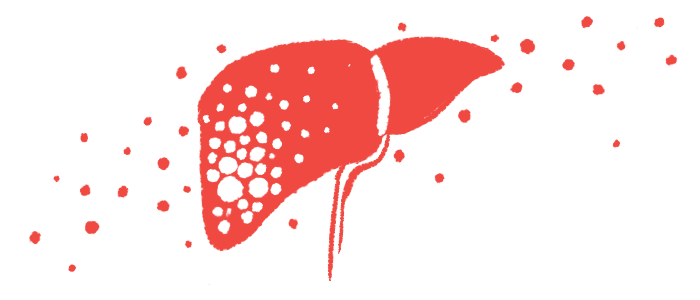Rare EPP case starts with symptoms in liver, not skin, report finds
Researchers: Timely diagnosis key as damage to organ can be life-threatening
Written by |

For a woman with erythropoietic protoporphyria (EPP) in China, the first symptoms did not involve the skin, as is typical, but rather the liver, drawing doctors’ attention to an unusual presentation of the disease.
“Timely identification of EPP not only facilitates appropriate management, but may also prevent irreversible hepatic [liver] damage and reduce the risk of fatal outcomes,” researchers wrote in a report.
The woman’s case was described in the report, “Recurrent Liver Dysfunction in Erythropoietic Protoporphyria: A Case With Compound Heterozygous FECH Mutations,” which was published as a letter to the editor in the Journal of Digestive Diseases.
Absence of skin symptoms can lead to missed EPP diagnosis
EPP is a type of porphyria that makes the skin very sensitive to sunlight, causing itching and burning. After continued exposure to light, the skin may become red and swollen. However, not all patients show symptoms involving the skin.
“In cases where cutaneous [skin] signs are absent, the multisystemic nature of EPP may lead to missed diagnosis or misdiagnosis, especially when patients first present with nonspecific complaints to non-dermatologic clinics,” the researchers wrote.
In their report, the researchers described the case of a 41-year-old woman who visited the hospital with recurring episodes of stomach pain, fatigue, and jaundice, or the yellowing of the skin and eyes, that had lasted for over 10 years. Upon examination, her upper-right abdomen was tender.
Blood testing revealed elevated levels of liver enzymes, a sign that the liver may be damaged. Total bilirubin, a yellowish pigment that causes jaundice and is formed when red blood cells are broken down, was also high and continued increasing despite treatment. On an MRI scan, doctors found mild widening of bile ducts — the tubes that carry digestive bile in the liver.
A liver biopsy — a procedure in which a sample of liver tissue is collected to be for examined — revealed a buildup of fat and scarring. Brown-colored deposits were found to contain iron. There was also mild inflammation with immune cells present.
Treatment should focus on preventing further liver damage
Further blood testing showed very high levels of free erythrocyte protoporphyrin, a substance that builds up in EPP. Genetic testing detected two mutations in the FECH gene, which encodes an enzyme called ferrochelatase. This enzyme is involved in the production of heme, a component of iron-containing proteins.
The two mutations were considered likely to cause EPP, confirming the diagnosis. Because the woman had no known family history of the disease and her parents were not genetically tested, the exact way these mutations were inherited is unknown.
Currently, there is no definitive treatment for EPP, which mainly involves symptomatic management. When liver involvement is prominent, its treatment should focus on reducing protoporphyrin accumulation and preventing further hepatic damage.
She was started on ursodeoxycholic acid — marketed as Urso and Actigall, with generics also available — to help bile flow more easily and reduce liver damage and scarring. The woman also received glutathione as an antioxidant, and a corticosteroid to reduce inflammation.
After about one year, the patient suddenly showed confusion and worsening liver function, leading to acute liver failure. Despite treatment, her condition declined. The woman and her family chose to stop treatment, and she died of complications from liver failure.
“Currently, there is no definitive treatment for EPP, which mainly involves symptomatic management. When liver involvement is prominent, its treatment should focus on reducing protoporphyrin accumulation and preventing further hepatic damage,” the researchers wrote.







